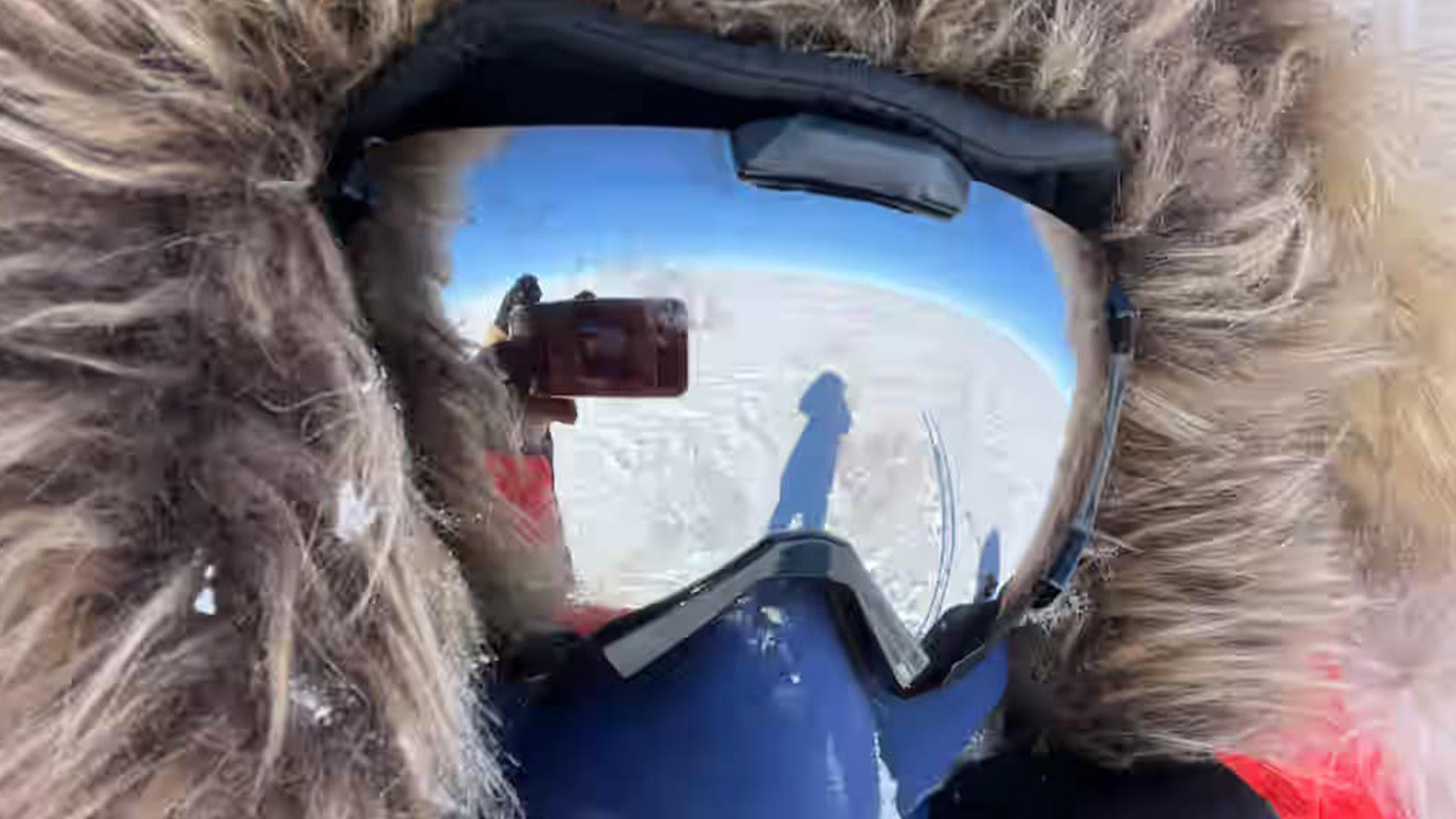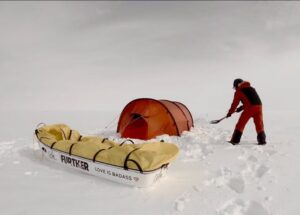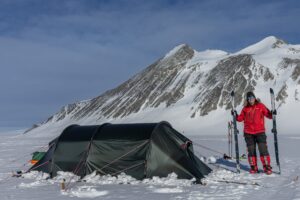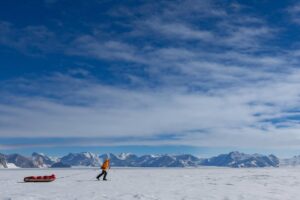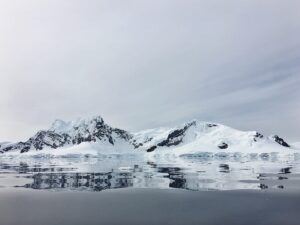The 2024-25 Antarctic expedition season ended this week. Over the last two months, skiers on six different routes attempted a mix of South Pole pushes, crossings, and climbs. While most skiers went solo and unsupported, one conducted her expedition with support, and a few more had to accept unplanned support along the way. Three Norwegian skiers tried and failed to break speed records, and an ambitious full, solo, unsupported crossing of the continent ran into trouble from the start.
Here’s a recap.
Crossings
The most ambitious expedition of the year, Ashkay Nanavati’s solo, unsupported crossing of Antarctica was always a long shot. The former soldier is an accomplished ultra-endurance athlete, but hauling 181kg for 2,735km over 110 days proved too much for him.
Soft snow on Berkner Island plagued the American shortly after he began, setting him immediately behind schedule. Imperfect conditions continued to put him behind as the days rolled on, forcing him to dig deep to try and make up time. In the final weeks, injuries began to crop up, forcing him into a pattern of a full day of hauling, followed by a half day, followed by a rest day. In the final week, Nanavati had conceded that he wouldn’t complete his crossing but wanted to stay on the ice for his full 110 days.
View this post on Instagram
But even that plan was scrapped when he developed diverticulitis, an inflammation of the lining in the lower intestine. With symptoms like dizziness and back and gut pain setting in, Nanavati accepted a medical evacuation after 60 days and 800km.
Youngmi Kim’s supported inland crossing ended successfully after 70 days when the South Korean reached her destination at the base of the Leverett Glacier. Kim’s expedition began shakily, with the skier experiencing equipment difficulties and other small issues. But she found her stride, eventually settling into a problem-free groove. Kim resupplied at the South Pole and had an uneventful final half of her journey to Leverett.
Record attempts along the Hercules Inlet route
It was an exciting year for fans of Norwegian skiing, as three citizens of that country attempted to beat speed records along the 1,130km Hercules Inlet route.
Hege Victoria came the closest to success. She aborted her attempt on the women’s speed record with less than 100km to go. For the first half of her expedition, Victoria was slightly behind Preet Chandi’s pace from last year, but by roughly halfway, she’d drawn even with Chandi. She even managed to edge out ahead of Chandi’s pace as she entered the final third of the route. Chandi’s overall time had been 31 days, 13 hours, and 19 minutes.
But Victoria’s margins weren’t wide enough to overcome poor weather and whiteouts as she neared the Pole. As a storm set in between the 86th and 87th parallel, Victoria began slowing down. She called it quits on the speed run at the 89th parallel and completed her push to the Pole at a more sedate pace.
View this post on Instagram
Arne-Kristian Teigland of Norway began his attempt to break Vincent Colliard’s scorching 22-day, 6-hour, 8-minute Hercules Inlet record from last year on a good footing. He stayed just ahead of Colliard’s pace all the way, but a fainting spell took him out of commission after 932km. He was medically evacuated to Union Glacier and is in good health now. Teigland was well-trained and well-prepared, and his failed attempt showcases just how fast Colliard’s record really is.
Kristin Harila never formally acknowledged she was going for a record, but her pace proved she had it on her mind. She cranked long days from the get-go, frequently logging over 45km. But a back injury early in the expedition proved an insurmountable hurdle. After running through all her pain meds, Harila aborted after 20 days and around 700km.
View this post on Instagram
Other skiers on the Hercules Inlet route
Skiers not attempting records along the Hercules Inlet route had mostly problem-free expeditions. Satish Gogineni, Catherine Buford, and Karen Kylleso all completed their solo, unsupported journeys with consistent skiing and no equipment malfunctions.
Meanwhile, Danish skier Rasmus Kragh will reach the Pole today. Kragh struggled to complete the distance with the food he was carrying. He eventually had to rely on an emergency food cache. When it first became apparent that Kragh was running low on food, he picked up steam and began interspersing 30km efforts with six hours of sleep. While this this strategy covered more ground, it left his body even more calorie-deficient than before, necessitating the resupply.
Messner Start to South Pole
Meanwhile, the 911km Messner Start route was not without its drama.
John Huntington finished his solo, unsupported effort strong after a mostly uneventful journey. He completed the route in 45 days, logging consistent 20km days.
Ali Riza Bilal had more trouble. Haunted by equipment failures, Bilal’s biggest setback was a broken ski binding that slowed him down and caused lingering leg pain. He eventually accepted a replacement binding and additional food supplies, meaning his previously unsupported effort became supported.
View this post on Instagram
Bilal also struggled with the mental side of the expedition, often referencing feelings of loneliness or despair in his updates. Despite that, Bilal reached the Pole in 51 days.
Other routes
Frederick Fennessy wrapped up his 1,400km expedition from Berkner Island to the Pole after 56 days of consistent effort. Fennessy’s updates often mentioned the physical effort, and he made frequent notes about the cold in the final weeks of the journey. But he logged a steady 25km daily average and completed the expedition with no injury or other setbacks.
Meanwhile, James McAlloon and guide Robert Smith’s Constellation Inlet to Mt. Vinson summit expedition also succeeded. The pair summited Vinson on January 5 after taking a different route up the mountain than they’d planned. McAlloon had some breathing problems near the summit but not enough to abort the climb. His breathing returned to normal after descending.
